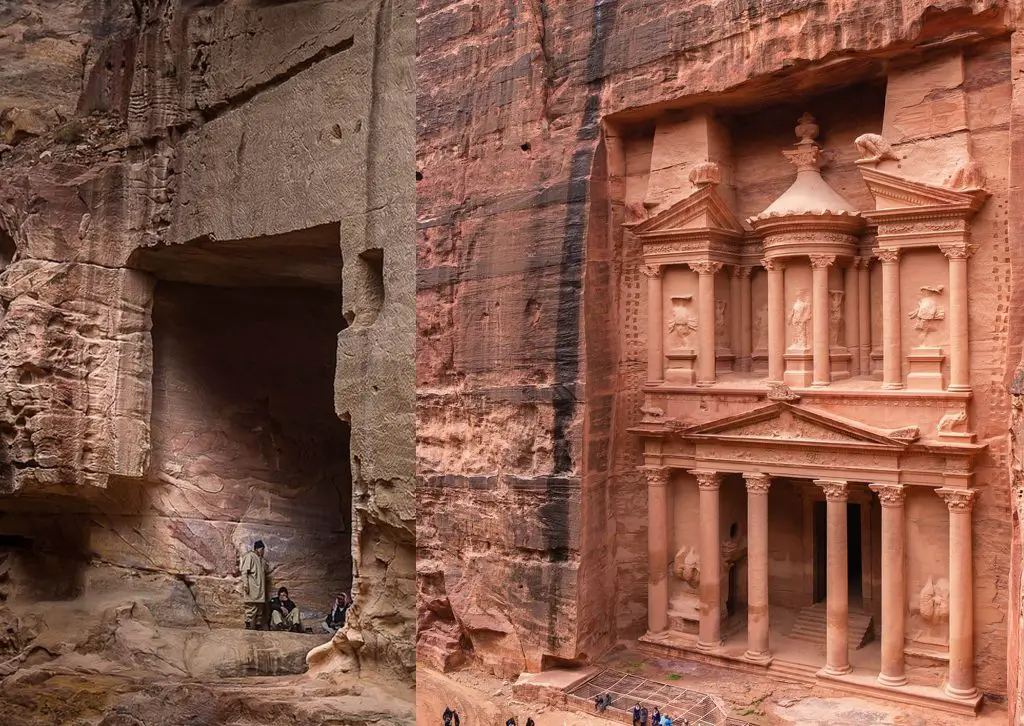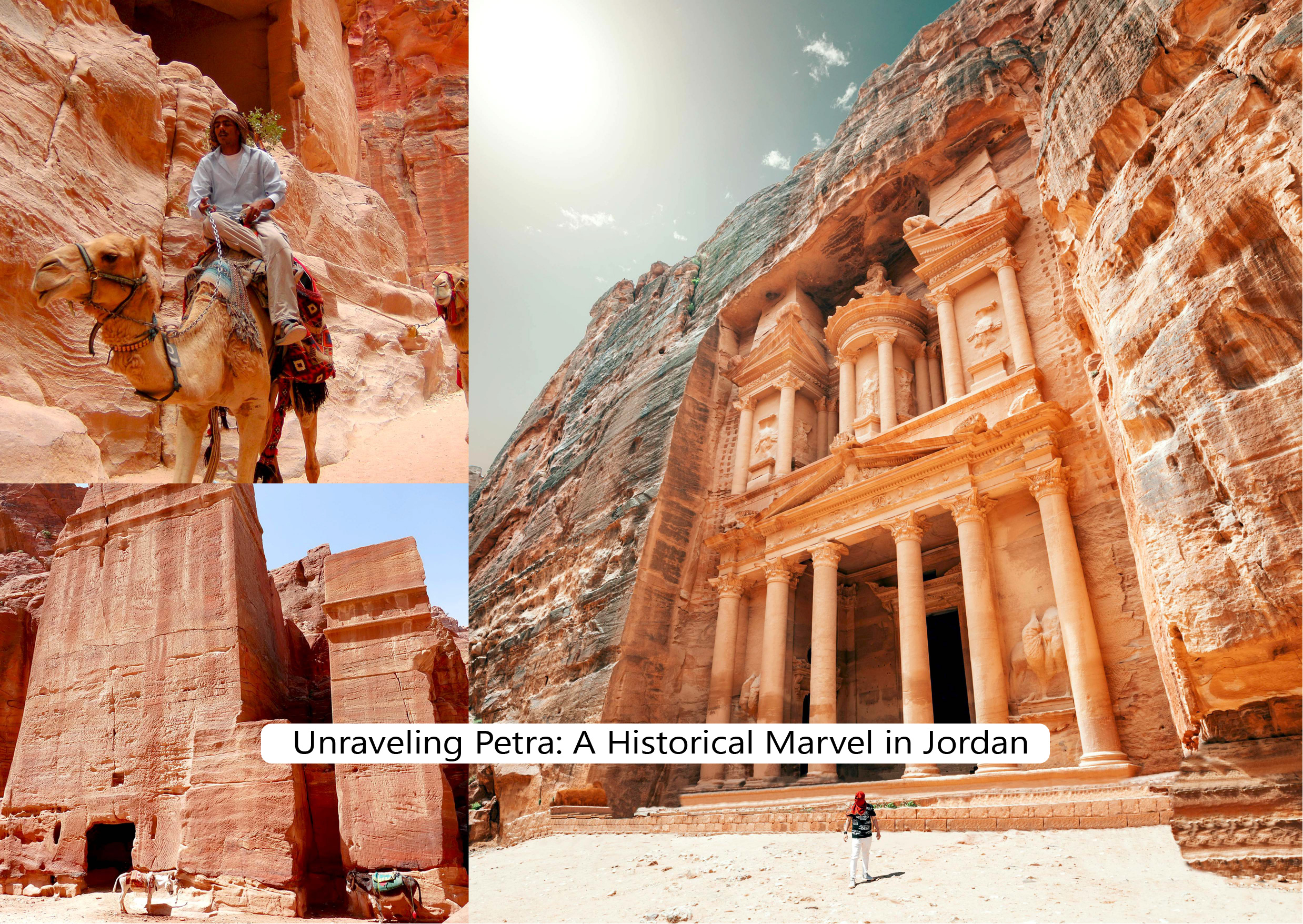Petra is a word full of mystery and majesty that speaks to people’s inventiveness and the depth of human history. This archeological marvel, tucked away in the untamed southern region of Jordan, has fascinated explorers, scholars, and tourists for decades. Let’s take a trip to discover Petra’s cultural relevance and historical wonders as we peel back its layers.
Background Information in History
Petra’s history begins in the fourth century BC when it was the thriving capital of the Nabataean Kingdom. Petra prospered because of its location along the Silk Road; the strategic trading hub, which connected the East and the West, was founded. The city’s rich architecture, which combines elements of Arabian, Roman, and Hellenistic design, is a testament to its prosperity.
Wonders of Architecture
One cannot talk about Petra without being in awe of its architectural achievements. The most famous examples of Nabatean artistic ability are the Treasury, Al-Khazneh, with its elaborate façade, and the Monastery, a massive building set into the rose-red cliffs. These engineering wonders carved out of rock amaze tourists and cast doubt on prehistoric societies’ abilities.
The civilization of Nabateans

The Arab nomads known as the Nabateans were crucial to Petra’s ascent to fame. The Nabateans, who were well-known for their intricate carvings and cutting-edge water-saving methods, had a lasting impact on the city’s architecture. With influences from Arabia, Egypt, and the Mediterranean visible in its art and architecture, Petra evolved into a cultural melting pot
Caravan Paths and Commerce
Petra became an important trading hub. The city’s wealth and success were driven by the trading of exotic items such as silk and spices. The remains of its complex water conduit system serve as evidence of the city’s sophisticated engineering and guarantee a steady supply of water for its citizens.
The City of Roses
Petra’s nickname, “The Rose-Red City,” perfectly captures the captivating colors of the cliff faces that hold its buildings. The site’s geological wonder is the sandstone cliffs, which have been organically sculpted over millennia by erosion. The outcome is a stunning range of red and pink tones that give the city an ethereal light, especially at sunrise and dusk.The Forgotten City Petra had been hidden for generations until the Western world found it early in the 19th century.
The modern world first revealed majesty in 1812 when Swiss explorer Johann Ludwig Burckhardt broke into the city. Archaeological excavations have revealed numerous artifacts that illuminate the Nabatean people’s daily lives.
Petra in Popular Culture
Petra has a fascination that transcends history and archeology and permeates popular culture. Numerous movies, including the well-known Indiana Jones and the Last Crusade, have used the city as a background. Its enigmatic and magnificent architecture never ceases to awe writers, artists, and filmmakers, guaranteeing its place in the collective consciousness.
Obstacles and Conservation Initiatives
But Petra’s celebrity has a price. Its fragile buildings are in danger due to environmental causes and the flood of tourists. Conservationists and local government officials must contend with the constant struggle to maintain Petra’s authenticity while facilitating global access. Conservation and sustainable tourism efforts aim to strike a balance between discovery and preservation.
Snacking and Cultural Treats

In addition to its historical gems, Petra offers a sample of Jordanian food and culture. Traditional foods like falafel and mansaf entice the senses and take guests on a gastronomic adventure. Festivals and cultural events showcase Petra’s vibrancy.
Virtual Investigation
Virtual explorations offer an option if a physical visit is not possible. Thanks to a plethora of internet materials and virtual tours, enthusiasts worldwide may experience Petra’s majesty from the comfort of their homes. Because of its accessibility, Petra’s wonders can be appreciated by a wider audience, highlighting its historical significance.
The Future of Petra
Petra will have to deal with the issue of sustainable tourism in the future. It takes careful preparation and teamwork to balance the modern world’s needs and the preservation of its historic landmarks. Efforts focused on conscientious tourism and community engagement will enable Petra to fascinate future generations.
Conclusion
By dissecting Petra, we uncover a historical wonder and a dynamic example of human civilization’s tenacity. Petra is a representation of tenacity and cultural diversity, both in its past and in the present. Following in the Nabateans’ footsteps,
Other notable archeological sites in Jordan are Jerash and Umm Qais.
It could take a whole day to explore Petra fully, giving you plenty of time to see the important locations.
Yes, there are tours with guides that give you an inside look at the location’s significance and history.
Weekdays and early mornings are usually less crowded and provide a more tranquil experience.
The trek to the Monastery’s summit, which offers a breathtaking vantage point, is strenuous but worth it.


